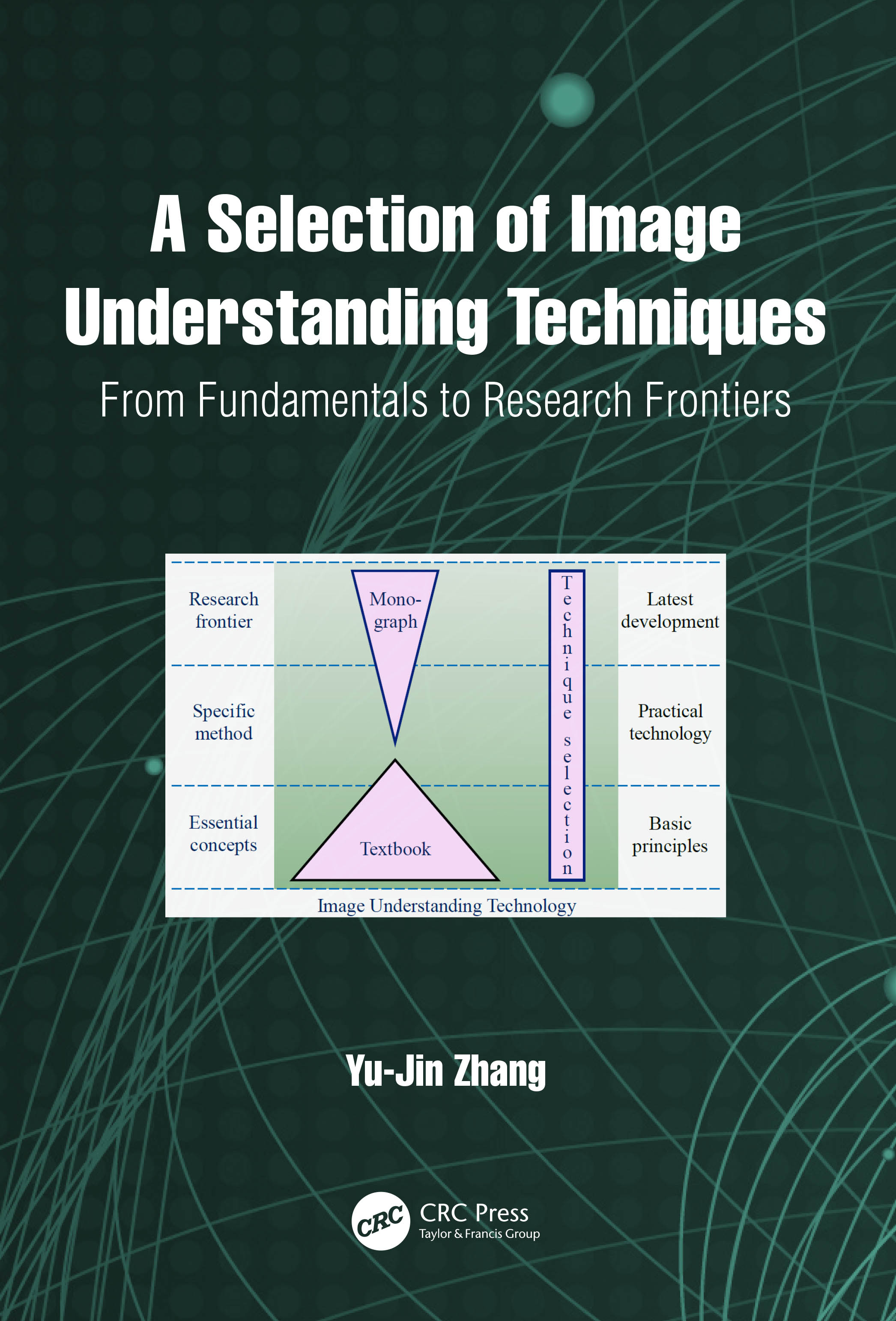|
A Selection of Image Understanding Techniques: From Fundamentals to Research Front Yu-Jin ZHANG CRC Press, Taylor & Francis Group£¬2023 |
|
|
|
ISBN: 978-1-032-42345-6 (hardcover) |
|
Preface |
Image understanding is a discipline that has attracted a lot of attention in information community. Image understanding technology has been widely used in many applications in our society. This book takes a new way, in combining the contents, characteristics and styles of both textbook and monography, to introduce image understanding technology. This book is different from pure textbook on image understanding, it is also not a theoretical monograph on image understanding technology. In this book, the introduction is focused on several commonly used image understanding techniques. For each of these selected techniques, a comprehensive coverage is provided. The book starts from the essential concepts and basic principles, passes through the typical specific methods and practical techniques, and arrives the research frontier trends and latest developments. This book should be suitable for readers who do not have the complete foundation of image understanding, yet, but need to use image understanding techniques to solve specific tasks. From this book, readers can quickly grasp the elementary knowledge for the further study without the pre-request for the relevant basis information; readers can find a suitable technique for solving practical problem, and readers can learn the latest development in the specific application domain. The seven selected image understanding techniques (based on image processing and analysis) are: Camera model and calibration, Stereo vision, Generalized matching, Scene analysis and semantic interpretation, Multi-sensor image information fusion, Content-based visual information retrieval, and Understanding spatial-temporal behavior. This book does not attempt to cover all branches of image understanding technology, rather, it tries to give a profound discussion on those selected techniques. The presentations and discussions on each of these techniques are self-contained. The materials in this book are arranged in eight chapters with 47 sections, 120 sub-sections, with 164 figures, 41 tables, and 366 numbered equations. Moreover, over 200 key references are introduced and provided at the end of book for further study. Special thanks go to Taylor & Francis Group, and their staff members. Their kind and professional assistance are truly appreciated. Last but not least, I am deeply indebted to my wife and my daughter for their encouragement, patience, support, tolerance, and understanding during the writing of this book. |
|
Contents |
(More in "Detailed contents")
|
Back to Books ·µ»ØÊé¼® |
|---|---|
